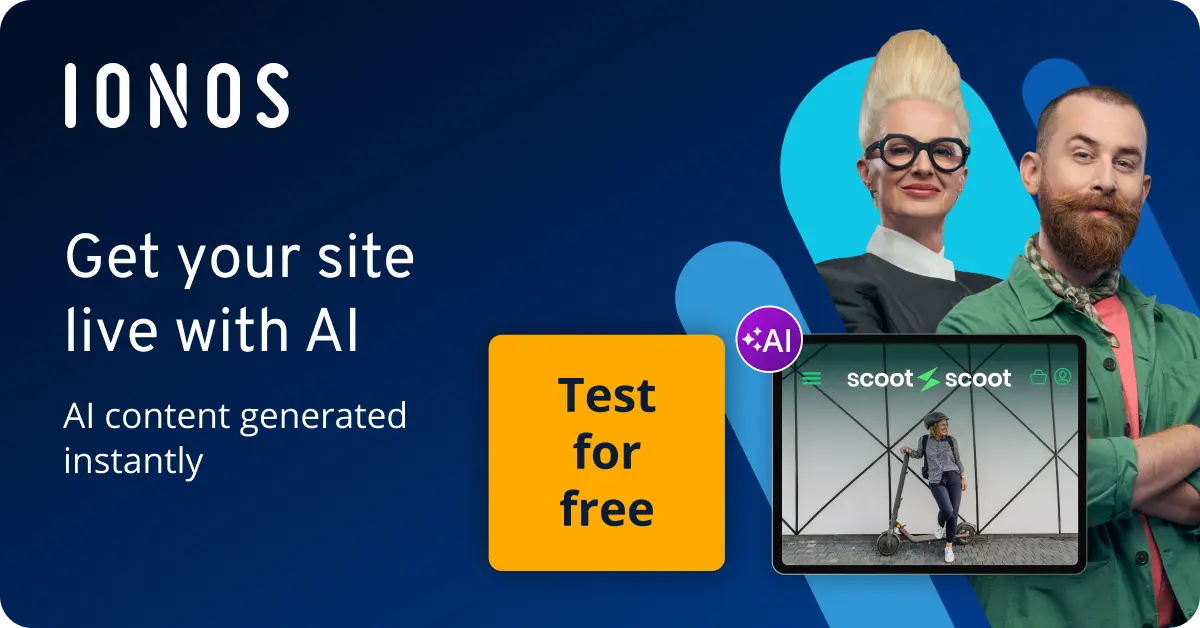What kind of future does outbound marketing have in this era of the internet?
Outbound marketing is one of the most popular forms of promotional communication for contacting customers, informing them about products or services, and ideally generating sales. The underlying principle behind it is that the company actively approaches customers in order to make them aware of any company news, for example, by creating TV adverts or using outdoor advertising such as posters. Different tactics are used to make the offer appealing to them. But are these outbound marketing measures still meaningful now that online media exists?
Outbound marketing: the definition
When it comes to outbound marketing, advertising messages are distributed on different channels. Irrespective of the channel, the following always applies: the company initiates contact with the customer and provides them with the latest information on products, promotions, offers, and services – without the customer having expressed any interest in making a purchase. Outbound marketing, often referred to as 'old' marketing, is the traditional method of marketing, whose reach depends entirely on the channel being used.
In contrast to outbound marketing, inbound marketing is designed so that the customer can find relevant offers themselves.
Which advertising channels does outbound marketing use?
Outbound marketing is any advertising measure in which a message is unsolicitedly sent to the potential customer. Synonyms for outbound marketing include 'push marketing' and 'interruption marketing'.
The most common methods for outbound marketing are direct advertising, poster campaigns, cold-calling, or sending e-mails (mass e-mail campaigns). Sponsoring events, trade fair presentations as well as advertising on TV, radio, print, and direct personal contact are outbound marketing strategies that can be encountered on a daily basis.
There are basically four types of channels:
- Print media: press advertising, flyers, and leaflets that can be found in your mailbox, are a form of outbound marketing – be it advertising from the pizza supplier or from the local painter
- Outdoor advertising: in addition, outbound marketing also includes billboards and advertising on lamp posts. Advertising in public spaces is also called 'out of home media'. Outdoor advertising also includes bus and train advertisements
- TV and radio: TV and radio advertisements are also a form of outbound marketing
- Internet: advertising banners on external websites are counted as outbound marketing
How does outbound marketing work?
Depending on which advertising channel you use, the aim is to draw the target group’s attention to the advertised product or service. The push strategy is used to achieve this. The difference between this and a pull strategy is shown here:
- Push: the manufacturer wants his goods to be displayed in as noticeable a way as possible on the retailers’ shelves in order to be seen by as many customers as possible
- Pull: as a result of massive branding efforts on the company’s part, there is a demand by customers for a certain product, so retailers are practically forced to include it in their product range
The company tries to convince the customer that they need this product by means of advertising or other measures, such as trial products. A classic push strategy in outbound marketing is sale stickers. These encourage customers to buy products that they may never have thought of purchasing. Other push strategy methods are:
- Discount campaigns
- Price discounts
- Catalogue sales
When it comes to catalogue sales, customers are presented with a portfolio of products that they can choose from. The best-case scenario is that the moment the customer looks at the offers, they feel the need to buy something. The same goes for recommendations in online shops – customers usually receive unsolicited recommendations based on fixed algorithms ('Customers who bought this item also bought… '). The recommendations are intended to arouse further interest among customers and to make them more familiar with the shop’s products and services.
Advantages and disadvantages of outbound marketing
Outbound marketing measures can, in most cases, be identified as advertising even if they are not clearly marked as such, meaning it’s no surprise to the customer. This is definitely the case with classic examples of outdoor advertising: passers-by read ads on billboards and the products become stuck in their minds. Also with TV advertisements: advertising melodies and images are unconsciously linked to a certain product and influence people when they decide on a brand or product.
The point, however, is that most people are able to see right through outbound marketing methods and are already tired of them. This results in the onlooker ignoring obvious advertisements and becoming immune to them (this is known as 'banner blindness'). Nowadays, consumers have to filter out countless pieces of information every day, which means that anything that doesn’t immediately appeal to them, will be ignored.
For this reason, marketers are forced to use new forms of outbound marketing (an extreme example of this is guerrilla marketing) – or even to completely forgo it. It goes without saying that it is important to differentiate between the location, the target group, and what you’re advertising. For the local coffee shop, leaflets and circulars may be the best choice. However, a start-up that wants to promote its innovative product may opt for a completely different strategy, such as an advertising campaign on social media.
Another problem with outbound marketing is that the relationship between the cost and the success cannot be verified because there is no direct feedback. Advertising e-mails, for example, are often sent to the recycling bin without being opened. This means that the target group could be passed by. The worst case is that potential customers could start to have negative thoughts about the brand since they’re being annoyed by all the ads. In order to prevent this from happening, it is advisable to keep current e-mail marketing trends in mind
Nowadays, outbound marketing is much less significant than it used to be and is often replaced by web-based inbound marketing. This is not least due to the change in the media landscape.
| Advantages of outbound marketing | Disadvantages of outbound marketing |
|---|---|
| ✓ Advertising is labelled or identifiable as such | ✗ Return on Investment (ROI) difficult to measure |
| ✓ Enables eye-catching formulations | ✗ Low success rate with high cost and a lot of effort |
| ✓ Easy delivery for regional advertising through direct circular mails | ✗ Adblockers and spam filters make it difficult to contact the customer |
| ✓ Negative reactions can’t be seen by other customers so chain reactions are rare | ✗ The desired target group is often not addressed at the correct time |
| ✓ Emotional impact z. B. via TV adverts, brand is more memorable – high recognition value | ✗ Customer preferences are often not taken into account – advertising isn’t tailored to just one person |
| ✗ Customers can judge the marketing measure negatively e.g. paper waste from flyers isn’t good for the environment | |
| ✗ No direct feedback from leads |
Inbound marketing vs. outbound marketing
For a long time, outbound marketing was the most popular method for a company to draw attention to its products. Flyers, posters, and billboards, as well as radio and TV advertising meant that potential customers became more aware of the company and its products. However, push marketing and outbound marketing have been increasingly losing their impact.
Due to the ever-expanding rise of the internet, outbound marketing has changed somewhat: advertising banners, unsolicited advertising e-mails, etc. are still on the agenda. However, more and more companies are switching to inbound marketing. Clever search engine optimisation (SEO) and advertising (SEA) are just as much a part of this as content marketing (which has become widespread in the meantime) or increasingly targeted customer care via newsletters and other mailings.
The advantages of inbound marketing are lower costs and higher sales opportunities. After all, the customer’s interest has brought them this far.
| Inbound | Outbound |
|---|---|
| The customer contacts the company | The company contacts the customer |
| One-to-one communication | One-to-many communication – without feedback |
| Added value by making information available – coordinated advertising | Added value is often limited – advertising for the masses |
| Channels: search engines, recommendations, social media | Channels: print, TV, radio, flyers, mass e-mails, banners, etc. |
| Lower costs | Higher costs |
In summary, the main difference between inbound and outbound marketing is that with 'outbound marketing', the customer is addressed directly by the retailer, even though the retailer doesn’t know if the customer is interested or not. When it comes to inbound marketing, on the other hand, customers come looking for relevant products and services. Therefore, unlike outbound marketing, companies do not have to fight for the customer’s attention. All you have to do is make sure you are in the right place at the right time.
However, many online marketing companies have realised that a healthy mix of inbound and outbound marketing measures are often the way forward. Online marketplaces (e.g. Amazon) are pioneers in this respect. Because of their extensive databases, which are created by customer activity on their site, they can display relevant advertisements and recommendations, etc. for their users in order to make their products even more attractive. Ideally, a customer only sees products that really interest them.
inbound marketing is usually cheaper and more lucrative than outbound marketing. But in some cases, outbound marketing is still a good way to attract customers. Traditional media continues to reach people almost everywhere in their everyday lives. User-specific advertisements, which are also part of outbound marketing, are also shown on video portals. However, there is a clear trend for outbound marketing being increasingly used in combination with inbound marketing.

